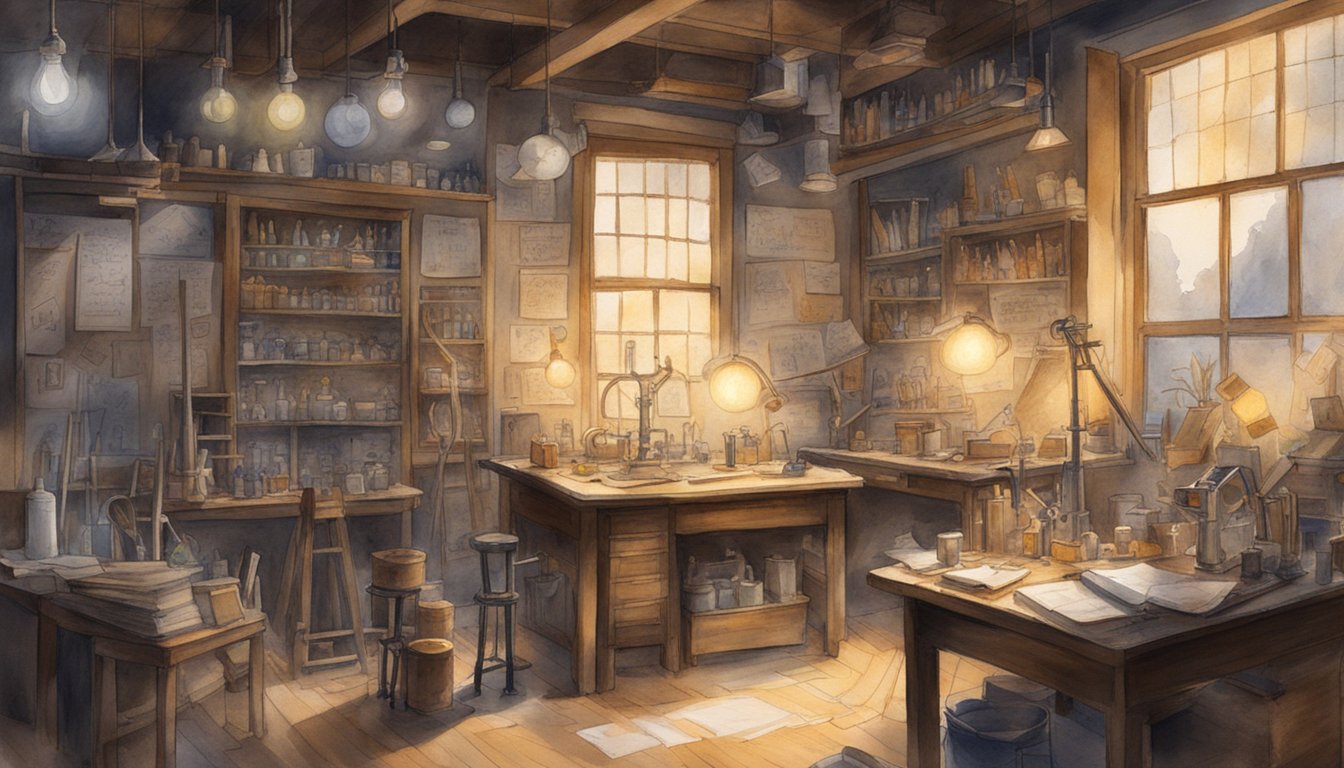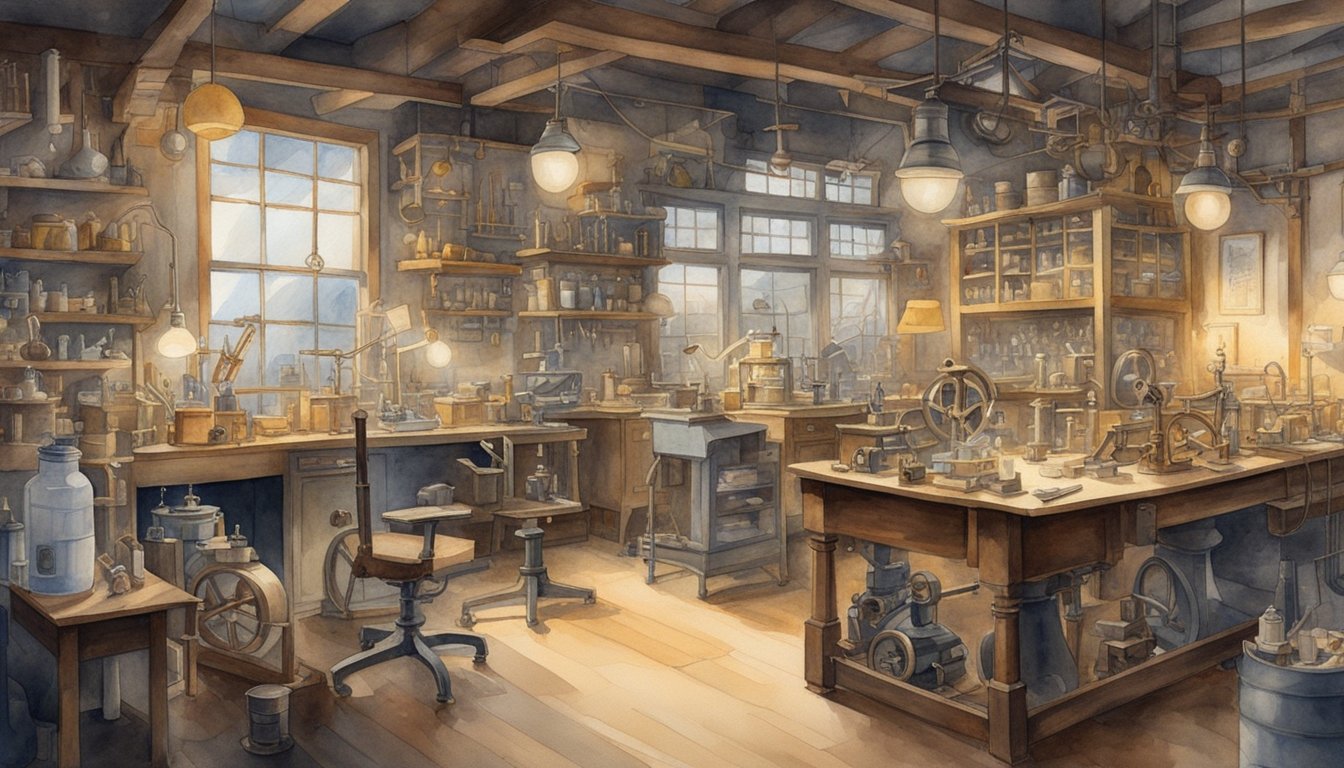Early Life and Inventions
Thomas Alva Edison’s journey from a small town in Ohio to becoming a prolific inventor started with humble beginnings and was marked by an insatiable curiosity that would fuel his numerous contributions to the world.

Beginnings and Personal Life
Thomas Alva Edison was born on February 11, 1847, in Milan, Ohio, to Samuel Edison Jr. and Nancy Matthews Elliott. His family moved to Port Huron, Michigan, where young Edison attended school but struggled with the traditional curricula likely due to his partial deafness. Edison’s mother, a former schoolteacher, decided to homeschool him, fostering his early affinity for learning and experimentation.
At age 16, he began working as a telegrapher, which allowed him to travel and exposed him to a world of innovation and ingenuity. This experience honed his skills in telegraphy and fed his appetite for electrical knowledge. Edison’s personal life also saw him marrying Mary Stilwell in 1871, with whom he had three children. After her death, he married Mina Miller in 1886 and had three more children.
The Making of an Inventor
Edison’s initial inventions were related to telegraphy, his first proving ground. His early work in Newark, New Jersey, bore inventions that improved the telegraph’s efficiency. However, it was at Menlo Park, New Jersey, that Edison would make his mark.
In Menlo Park, dubbed the “Invention Factory,” Edison and his team developed the phonograph, an invention that could record and reproduce sound, sparking astonishment and earning Edison the nickname “The Wizard of Menlo Park.” Alongside his team, he began working on a reliable and safe version of the electric light bulb. The success of this invention in 1879 revolutionized how people lived and worked, extending the day beyond sunset and making him a household name.
His career was characterized by a tireless work ethic and a prolific output, resulting in over 1,000 patents in his name. Edison’s life story tells a tale of perseverance, ingenuity, and an undying quest for knowledge that led to inventions which significantly shaped the modern world.
Key Innovations and Business Ventures

Thomas Edison, the celebrated American inventor, is renowned for a multitude of groundbreaking inventions that propelled technology forward. At his Menlo Park laboratory in New Jersey, Edison developed the Phonograph, a device that recorded and reproduced sound, a precursor to modern audio devices.
His notable work with electric light led to the first commercially practical incandescent lamp. Following this success, he established the Edison Electric Light Company, which eventually became part of today’s industrial giant, General Electric. The creation of the electric light bulb not only illuminated homes and streets worldwide but also sparked a revolution in energy and power distribution systems.
Edison wasn’t just an inventor; his foresight made him a prodigious businessman. He formed strategic partnerships that helped commercialize his inventions. The creation of the world’s first industrial research laboratory in West Orange, New Jersey, is a testament to his pivotal role in shaping modern industrial innovation.
In telegraphy, Edison’s work significantly advanced the field, resulting in several patents that improved the speed and efficiency of communication.
Transitioning into entertainment, his interest in motion pictures yielded the Kinetoscope, a device for viewing moving pictures.
Finally, not one to shy away from challenging industries, Edison invested considerable effort into developing storage batteries, envisioning a future powered by electricity beyond lighting.
For enthusiasts wanting a deeper dive into the differences in innovation practices between Edison and his contemporaries like George Westinghouse, the Cambridge Journal’s article on business history can shed light on this subject. His life and work continue to be a source of inspiration and fascination, much like the lasting glow of his beloved electric bulb.
Influence and Legacy
Thomas Edison, often hailed as the Wizard of Menlo Park, left an indelible mark on the world with his innovations and entrepreneurial spirit. His work profoundly influenced the course of the Industrial Revolution, bridging the gap to the modern age of electricity and technology. He holds over 1,000 patents for his inventions, which include the phonograph, the motion picture camera, and, most famously, the practical electric light bulb.
The legacy of Edison extends beyond his inventions. His approach to problem-solving through rigorous experimentation laid the groundwork for modern research and development laboratories. The impact that Edison had on society is also seen in his creation of the first industrial research lab in Menlo Park, New Jersey.
Edison’s personal connections played a role as well; he was friends with automaker Henry Ford, and their ideas about mass production and innovation fed into each other’s work. Ford would later establish the assembly line method, changing manufacturing permanently.
Glenmont, Edison’s home in West Orange, New Jersey, remains a testament to his life and accomplishments. It’s part of the Edison National Historic Site, highlighting his enduring influence. Even today, Edison’s approach to innovation and entrepreneurship continues to inspire generations, championing the idea that through persistence and hard work, amazing discoveries are within reach.

